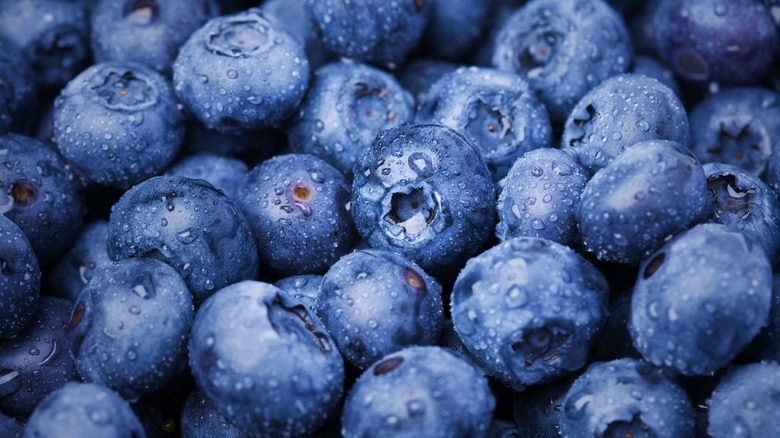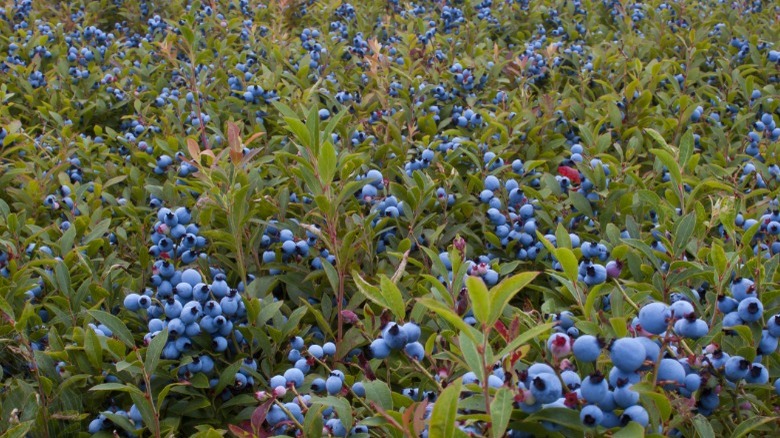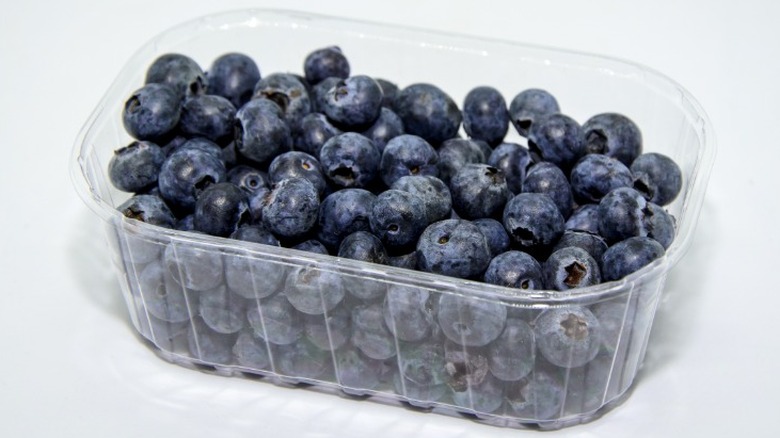Wild Vs Normal Blueberries: What's The Difference?
Is there anything you can't add blueberries to? They're so easy to pop into tasty blueberry muffins, bring flavor to smoothies with, and help make the perfect fruit pies — or if you love them enough, you just eat them plain — straight out of the package. Even if you consider yourself to be a blueberry aficionado, though, you might not realize that there are actually multiple variations of the small blue fruit.
In particular, the wild blueberries you might have seen in the frozen section are actually a distinct variety of berry with their own characteristics that deviate from their traditional blueberry cousins. At first, you might assume "wild" is just a naming convention, but there truly are major differences between wild and traditional blueberries. Wild blueberries still are blueberries, of course, but where they deviate from traditional blueberries comes down to a number of factors including size, how they're grown, and potential health benefits.
What are wild blueberries?
Wild blueberries are considered to be a "lowbush" fruit, which means that they grow on plants that are not taller than 2 feet. Additionally, their plants were not cultivated by humans; they are endemic to the areas they grow in — which includes Maine and other chillier climates like Canada. There are also varieties of the fruit that grow in tropical climates, and can be found in Central and South America.
Wild blueberries are smaller than traditional blueberries, which is something you may have noticed if you bought them by accident. Along with appearing different, these blueberries also have a distinct taste. Because of their size, wild blueberries have less water content and a stronger flavor than normal blueberries. Wild blueberries may also be better suited to your diet than their normal-sized cousins, depending on your own individual needs, because they are antioxidant-rich and contain more anthocyanins (antioxidants give the berries their blue color).
What about normal blueberries?
You're probably used to seeing packaged containers of traditional blueberries in the produce section of your local supermarket. Compared to wild blueberries, traditionally available blueberries are typically cultivated and planted products. They are highbush fruit, which means that the plants they grow on can be as tall as 8 feet. Normal, cultivated blueberries prefer sunnier, more temperate climates; this also means that you could successfully grow them yourself at home if you have a green thumb and the right conditions.
Supposedly, normal blueberries are not as good to cook with as wild blueberries because of their comparatively subtler flavor. They also don't freeze as well due to the higher water content. Regardless, both are a flavorsome addition to baked goods like homemade blueberry pies or tarts, and it's really up to you to decide which you prefer in terms of flavor and how you're planning on using them.


